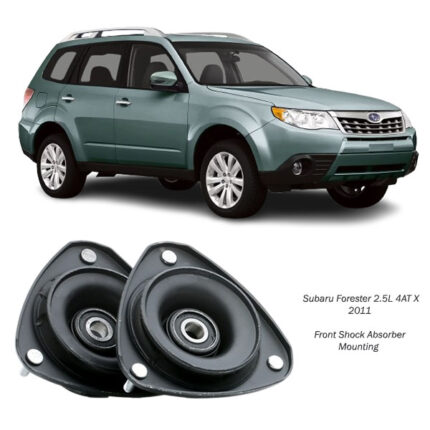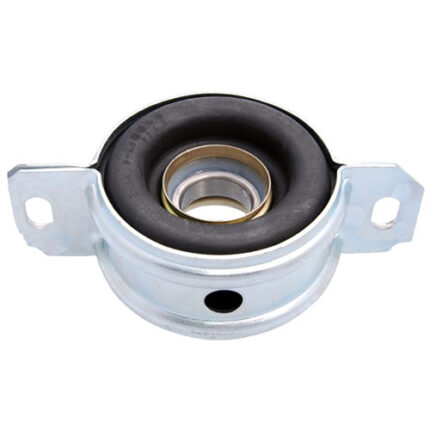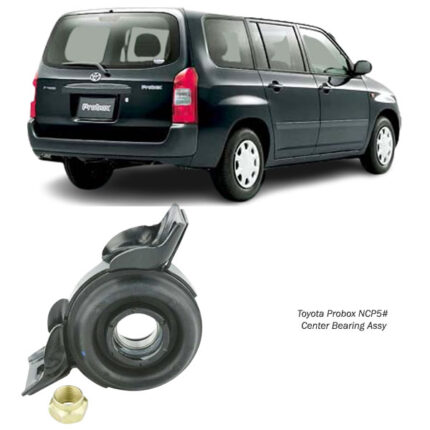-13%
Get Toyota Probox NCP5# Center Bearing Assy 3723059025 in Kenya
A center bearing assembly, often referred to as a center support bearing, is an important component in vehicles with a two-piece driveshaft. This assembly provides support to the driveshaft, ensuring its proper alignment and smooth operation. Here’s a detailed overview of the center bearing assembly, its components, functions, and considerations for maintenance and replacement:
Components of a Center Bearing Assembly:
- Bearing:
- The central component that allows the driveshaft to rotate smoothly. It typically contains ball bearings or roller bearings.
- Rubber Cushion:
- Surrounds the bearing, providing vibration dampening and reducing noise. This cushion absorbs shocks and helps maintain the alignment of the driveshaft.
- Bracket or Housing:
- The metal frame that holds the bearing and rubber cushion in place. It is mounted to the vehicle’s chassis or underbody.
- Mounting Bolts:
- Fasteners that secure the assembly to the vehicle.
Benefits of a Center Bearing Assembly:
-
Stability and Support for the Driveshaft
The primary function of a center bearing assembly is to provide support to the driveshaft, especially in vehicles with longer driveshafts. This support helps maintain alignment and stability, preventing the driveshaft from sagging or vibrating excessively.
2. Reduction of Vibrations
By supporting the driveshaft and keeping it aligned, the center bearing assembly helps to minimize vibrations that can occur during the rotation of the driveshaft. Reduced vibrations lead to a smoother and more comfortable ride for passengers.
3. Enhanced Drivetrain Longevity
A well-functioning center bearing assembly reduces the stress and wear on the driveshaft and related components, such as the universal joints (U-joints) and differential. This can extend the lifespan of these parts, reducing the need for frequent replacements and repairs.
4. Improved Vehicle Handling
With the driveshaft properly supported and aligned, the power from the engine is transferred more efficiently to the wheels. This results in better handling and control of the vehicle, especially during acceleration and deceleration.
5. Noise Reduction
A faulty or worn center bearing assembly can lead to clunking or banging noises as the driveshaft moves or vibrates excessively. A properly functioning center bearing assembly helps to eliminate these noises, contributing to a quieter cabin environment.
6. Enhanced Safety
By maintaining the alignment and stability of the driveshaft, the center bearing assembly helps prevent potential drivetrain failures that could lead to loss of control or other hazardous situations. This contributes to the overall safety of the vehicle.
7. Load Distribution
In vehicles designed to carry heavy loads or tow trailers, the center bearing assembly plays a crucial role in distributing the load more evenly across the driveshaft. This helps prevent overloading and potential damage to the driveshaft and other drivetrain components.
8. Improved Fuel Efficiency
Although the impact on fuel efficiency is minimal, a properly supported and aligned driveshaft can contribute to smoother power delivery and reduced mechanical resistance. This can result in slight improvements in fuel efficiency.
Symptoms of a Failing Center Bearing Assembly:
- Vibration:
- Excessive vibrations felt through the floorboard or the seat, especially at higher speeds, can indicate a failing center bearing.
- Clunking or Thumping Noises:
- Unusual noises coming from the center or rear of the vehicle when accelerating or decelerating.
- Driveshaft Movement:
- Excessive movement or play in the driveshaft when inspecting underneath the vehicle.
- Misalignment:
- Visual misalignment of the driveshaft when the vehicle is raised and inspected.
Maintenance and Replacement:
- Regular Inspection:
- Periodically inspect the center bearing assembly for signs of wear, damage, or deterioration. Pay particular attention to the rubber cushion and the bearing itself.
- Lubrication:
- Some center bearings require periodic lubrication. Check the vehicle’s service manual for specific maintenance requirements.
- Replacement:
- If any symptoms of failure are present, it is important to replace the center bearing assembly promptly. Continuing to drive with a failing center bearing can lead to further damage to the driveshaft and other drivetrain components.
- Replacement involves removing the driveshaft, which can be complex and typically requires special tools and mechanical expertise. It is often recommended to have this service performed by a professional mechanic.
Steps for Replacing a Center Bearing Assembly:
- Lift the Vehicle:
- Safely lift and support the vehicle using jack stands or a lift.
- Remove the Driveshaft:
- Disconnect the driveshaft from the differential and transmission. Mark the positions to ensure proper reassembly.
- Remove the Old Center Bearing:
- Remove the mounting bolts and slide the old bearing assembly off the driveshaft.
- Install the New Center Bearing:
- Slide the new bearing assembly onto the driveshaft and secure it with mounting bolts.
- Reinstall the Driveshaft:
- Reattach the driveshaft to the transmission and differential, ensuring proper alignment.
- Lower the Vehicle:
- Lower the vehicle and perform a test drive to ensure proper operation and absence of noise or vibration.
Follow us on Facebook for more parts.




